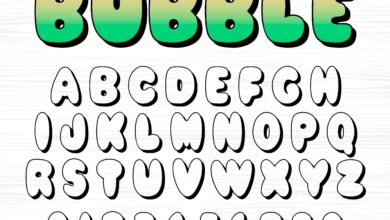Drawing:7barsug8u0w= Spiderman Techniques You Must Try for Realistic Art

Drawing superheroes is a unique and rewarding challenge for artists of all levels. One of the most iconic superheroes in comic history is Spiderman, known for his agility, striking costume, and dynamic poses. This article will provide a complete guide to mastering the art of drawing Spiderman, following the structure of the “drawing:7barsug8u0w= spiderman” keyword. Whether you’re a beginner or a more seasoned artist, this guide will walk you through the process step by step, covering essential tools, anatomy, techniques, and tips for capturing the essence of this legendary character.
1. Introduction to Drawing:7barsug8u0w= Spiderman
Spiderman has been a central figure in the world of comics since his debut in the early 1960s. His unique combination of youthful spirit, acrobatic abilities, and his everyday struggles resonate with fans worldwide. As an artist, capturing Spiderman on paper requires an understanding of his character, body language, and his instantly recognizable costume drawing:7barsug8u0w= spiderman.
The term “drawing:7barsug8u0w= spiderman” may seem unconventional, but it emphasizes the focus on creating an authentic and compelling representation of Spiderman, with particular attention to the visual elements that make him stand out. From the detailed webbing of his suit to his dynamic movement, drawing Spiderman requires attention to detail, creativity, and a good understanding of anatomy and proportion. This guide will break down each step, giving you the tools and knowledge to draw Spiderman like a pro drawing:7barsug8u0w= spiderman.
2. Essential Tools and Materials for Drawing Spiderman
2.1 Sketching Tools
Before diving into drawing, having the right tools is essential. If you’re working traditionally, invest in high-quality pencils. The range from H (hard) to B (soft) allows you to sketch lightly or add dark, bold lines where needed. A fine eraser is also critical for creating clean lines and fixing small mistakes without smudging. While standard sketch paper works fine, opting for a thicker surface will allow you to blend shading more easily and hold ink better once you reach the final stages drawing:7barsug8u0w= spiderman.
2.2 Digital Drawing Tools
In the digital realm, software such as Procreate, Photoshop, or Clip Studio Paint provides artists with powerful tools to sketch, refine, and color their artwork. A pressure-sensitive stylus and a good-quality tablet make it easier to control line weight and apply detailed shading. The advantage of digital drawing lies in its flexibility; layers allow you to experiment without worrying about damaging the final image, and adjustments like resizing or warping are simple to execute drawing:7barsug8u0w= spiderman.
2.3 Inking and Coloring
Once you’ve completed your initial sketch, inking is the next step to bring Spiderman’s features into sharper focus. Fineliners or brushes help create clean, consistent lines. For coloring, markers and watercolors can work well in traditional media, while digital artists can leverage a wide range of brushes and blending modes for dynamic shading and coloring drawing:7barsug8u0w= spiderman.
3. Anatomy and Proportions of Spiderman
3.1 Understanding Spiderman’s Physique
Spiderman’s build is lean, athletic, and defined by his agility rather than bulky muscle. To draw him accurately, start with basic shapes to map out his proportions: a small head, elongated limbs, and a narrow waist. This framework allows you to position him in dynamic, gravity-defying poses, reflecting his superhuman abilities. Pay attention to muscle groups such as his biceps, triceps, and torso, as these areas should be detailed to show strength but not overpowering bulk drawing:7barsug8u0w= spiderman.
3.2 Drawing Spiderman’s Iconic Suit
Spiderman’s suit is one of the most intricate aspects of his design. The tight, form-fitting costume requires careful attention to detail, especially the webbing pattern that stretches across his body. Start by drawing the base form of Spiderman, then overlay the webbing, ensuring that it follows the contours of his body to create a sense of depth. The mask is simple, with large, expressive eye shapes that often serve as focal points in action shots. Getting the emblem on his chest and back symmetrical is another critical part of his design drawing:7barsug8u0w= spiderman.
3.3 Drawing Spiderman in Motion
Spiderman’s poses are often exaggerated to emphasize his flexibility and speed. When sketching Spiderman in action, use strong, sweeping lines to guide the eye through the image. His most iconic poses include mid-swing through the city or crouching on the side of a building. To create these images, focus on using perspective and foreshortening techniques to make his limbs pop off the page, adding to the dynamic feel of the scene drawing:7barsug8u0w= spiderman.
4. Step-by-Step Guide: Drawing Spiderman from Sketch to Final Artwork
4.1 Rough Sketching and Layout
Begin your drawing by lightly sketching the basic shapes that define Spiderman’s form. Circles for the head, chest, and joints, along with long, sweeping lines for his limbs, will help you map out his pose and overall structure. Make sure the figure is balanced, with the center of gravity correctly placed, especially in more dynamic poses like swinging or jumping drawing:7barsug8u0w= spiderman.
4.2 Refining the Sketch
Once you are satisfied with the rough layout, go back over the sketch to refine the lines and start adding more detail. At this stage, define the contours of his muscles, tighten up the shape of his hands and feet, and add initial outlines for his costume. Pay particular attention to his fingers and toes—Spiderman’s hands are often exaggerated with long, splayed fingers, reflecting his wall-crawling abilities.
4.3 Inking the Drawing
Inking transforms your rough sketch into a polished, finished piece. Use thin lines for intricate areas like the webbing, and thicker lines to emphasize shadows or areas closer to the viewer. When inking, avoid overcomplicating the lines. Spiderman’s design is intricate but clean, so focus on keeping the lines crisp and defined drawing:7barsug8u0w= spiderman.
4.4 Coloring and Shading
When coloring, start by laying down flat colors—red for his suit, blue for the secondary sections, and black for his webbing and emblem. Next, add shading to give depth to the image. Pay attention to where the light source is coming from, adding highlights to areas like his shoulders and chest, and shadows around his legs, arms, and under the chin to create a sense of volume drawing:7barsug8u0w= spiderman.
Conclusion: Becoming a Master of Drawing Spiderman
Drawing Spiderman may seem daunting at first, but with the right techniques and tools, you can capture his agility, strength, and spirit on paper. By mastering anatomy, dynamic poses, and intricate costume details, you can bring Spiderman to life in your own unique style. Whether working traditionally or digitally, the key is practice and patience. Keep refining your skills, and soon you’ll be able to create your very own Spiderman illustrations that jump off the page drawing:7barsug8u0w= spiderman.




